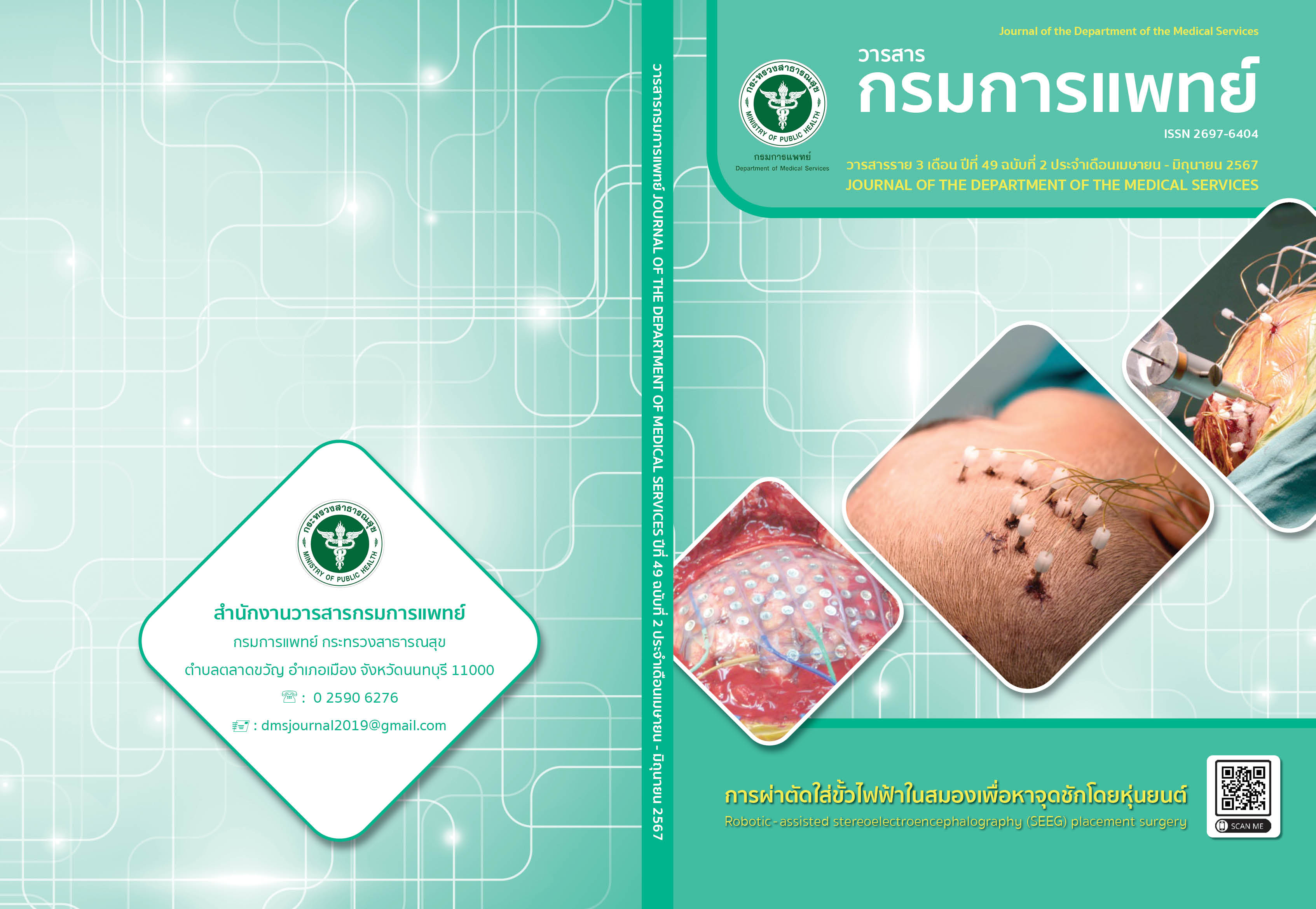Effect of Gap Size on Ulnar Variance Changes in Malunited Distal Radius after Open Wedge Osteotomy with Volar Locking Plate without Bone Graft in Malunited Distal Radius
Keywords:
Distal radius, Malunion, Opening wedge osteotomyAbstract
Background: Distal radius malunion may result in wrist pain, decreased range of motion, midcarpal instability, and affect the quality of life of the patients. There are many osteotomy techniques to correct malunion of the distal radius. The usage of a volar locking plate can also avoid extensor tendon irritation problems. To date, no previous study has mentioned about relation of gap size and radiographic parameter after corrective osteotomy, leading to the question of this study. Objective: to determine whether the time to union and the post-operative radiographic parameter changes were affected by gap size in malunited distal radius patients who underwent opening wedge osteotomy with volar locking plate without bone graft. Method: Retrospectively and prospectively analyzed data from 24 patients, including gap size, union time, and three radiographic parameters (ulnar variance, radial inclination, and volar tilt). The three radiographic parameters were collected at preoperative, immediate postoperative, and at the union time. The average follow-up time was 6 months. Result: The average gap size was 4.7 mm. The average union time was 11.2 weeks. No significant loss of reduction was found regarding the three radiographic parameters. All radiographic parameters were improved. No correlations between gap size and union time, as well as the three radiographic parameters, were found. Preoperative volar tilt had a moderate negative correlation and time from injury had a positive moderate correlation with the union time. Conclusion: When performing corrective osteotomies of malunited distal end radius without bone graft, increasing gap size was not correlated with delay union time nor radiographic reduction loss. Decreasing preoperative volar tilt and delayed operation may negatively affect union time.
References
Wolfe SW, Hotchkiss RN, Pederson WC, Kozin SH, Cohen MS. Green’s operative hand surgery. 7th ed. Philadelphia: Elsevier; 2017. pp.576-81.
Brogren E, Hofer M, Petranek M, Wagner P, Dahlin LB, Atroshi I. Relationship between distal radius fracture malunion and arm-related disability: a prospective population-based cohort study with 1-year follow-up. BMC Musculoskelet Disord 2011;12:9.
Grewal R, MacDermid JC. The risk of adverse outcomes in extra-articular distal radius fractures is increased with malalignment in patients of all ages but mitigated in older patients. J Hand Surg Am 2007;32(7):962-70.
Kodama N, Takemura Y, Ueba H, Imai S, Matsusue Y. Acceptable parameters for alignment of distal radius fracture with conservative treatment in elderly patients. J Orthop Sci 201419(2):292-7.
Mahmoud M, El Shafe S, Kamal M. Correction of dorsally-malunited extra-articular distal radial fractures using volar locked plates without bone grafting. J Bone Joint Surg Br 2012;94-B(8):1090-6.
Ozer K, Kiliç A, Sabel A, Ipaktchi K. The role of bone allografts in the treatment of angular malunions of the distal radius. J Hand Surg Am 2011;36(11): 1804-9.
Downloads
Published
How to Cite
Issue
Section
License
Copyright (c) 2024 Department of Medical Services, Ministry of Public Health

This work is licensed under a Creative Commons Attribution-NonCommercial-NoDerivatives 4.0 International License.
บทความที่ได้รับการตีพิมพ์เป็นลิขสิทธิ์ของกรมการแพทย์ กระทรวงสาธารณสุข
ข้อความและข้อคิดเห็นต่างๆ เป็นของผู้เขียนบทความ ไม่ใช่ความเห็นของกองบรรณาธิการหรือของวารสารกรมการแพทย์



